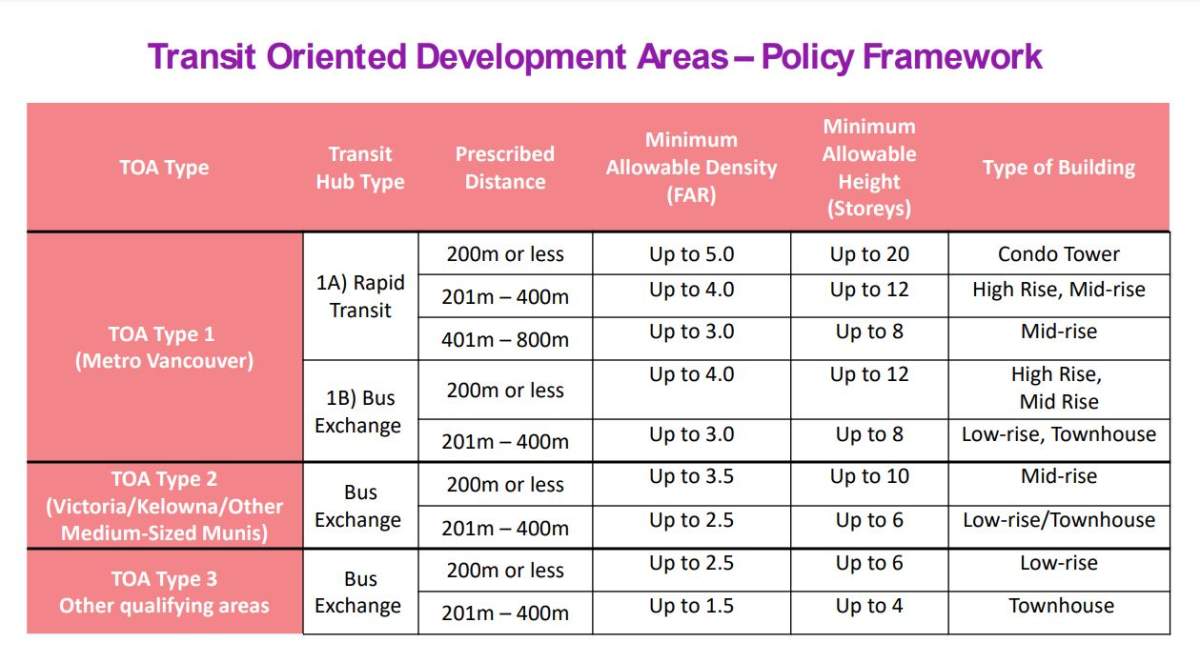The B.C. government announced new rules Wednesday that further overrule municipal zoning, the latest in a series of initiatives aimed at tackling the housing crisis.

Housing Minister Ravi Kahlon announced the new legislation that will, if passed, force some cities to allow towers of up to 20 storeys near certain transit hubs.

“Building more homes near transit is good for people, communities, and helps make the most of transit, infrastructure and services,” Housing Minister Ravi Kahlon said.
“But layers of regulations and outdated rules are stopping this kind of development from becoming a reality in too many municipalities. That’s why we are taking action to remove barriers and deliver more transit-oriented communities, faster.”
If passed, the legislation will mean cities must designate Transit Oriented Development Areas (TOD Areas) within 800 metres of a rapid transit station and within 400 metres of a bus exchange.
Those areas will include minimum height and density requirements, based on city size and distance from the transit facility.

The legislation would also remove minimum parking requirements in the TOD Areas.

Get breaking National news
“We see case after case where parking minimums have led to overbuilding of parking, leaving costly empty parking spots while people struggle to find affordable homes,” Kahlon said.
“We have heard that the cost of parking can add between $50,000 to $100,000 per cost of unit.”
Cities will be allowed to craft regulations permitting projects that exceed both density and parking minimums, but not to go under them.
The province will be releasing complete regulations and a policy manual in December aimed at helping cities set their own site standards that conform with the legislation.
At that point, areas that cities have already designated for transit-oriented growth will automatically be covered by the new rules. Cities that don’t have such a framework in place will be required to designate TOD Areas that that meet the province’s criteria by June 30, 2024.
“Transit infrastructure isn’t just about, you know, trip times and getting people from A to B,” Transportation Minister Rob Fleming said.
“It’s about building greener, better, more livable communities that are compact, that are complete, that have schools that have things like child care spaces, public plazas and public spaces.”

The proposed legislation follows other efforts by the BC NDP to flex the province’s regulatory muscle to get housing built.
Last week, Kahlon unveiled legislation that will force cities to update zoning to allow small-scale density, with up to four unit multiplexes on a standard single-family lot and up to six on a larger lot near rapid transit.
In September, the province unveiled five-year housing construction targets for 10 cities in the Lower Mainland and Vancouver Island at the top of the its so-called “naughty list” of development laggards.









Comments